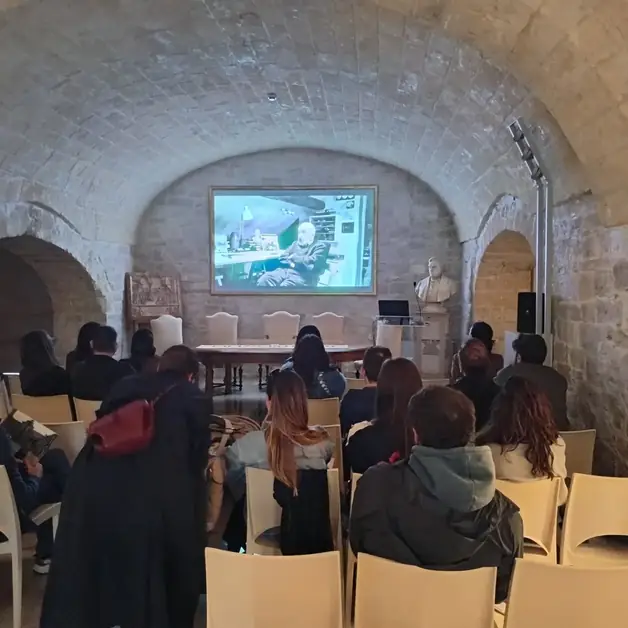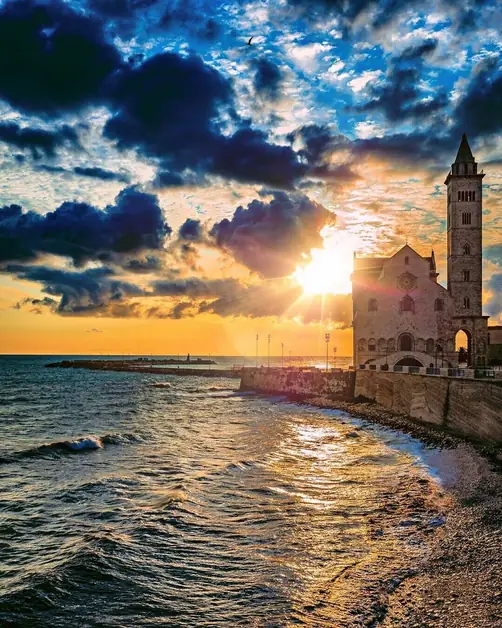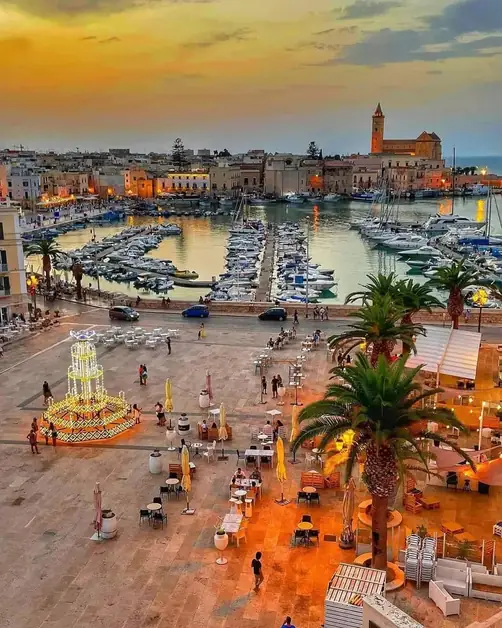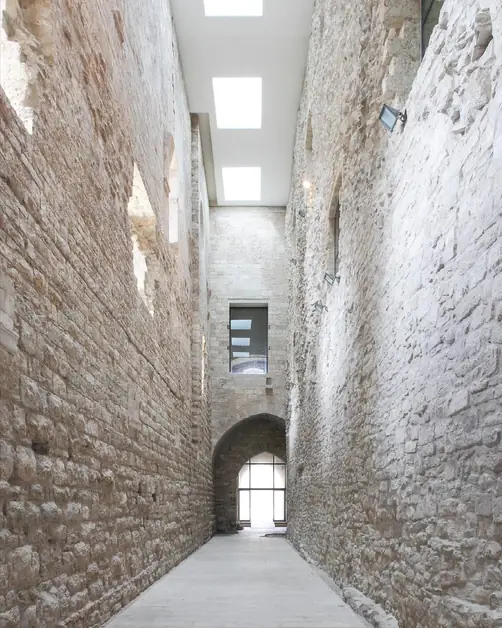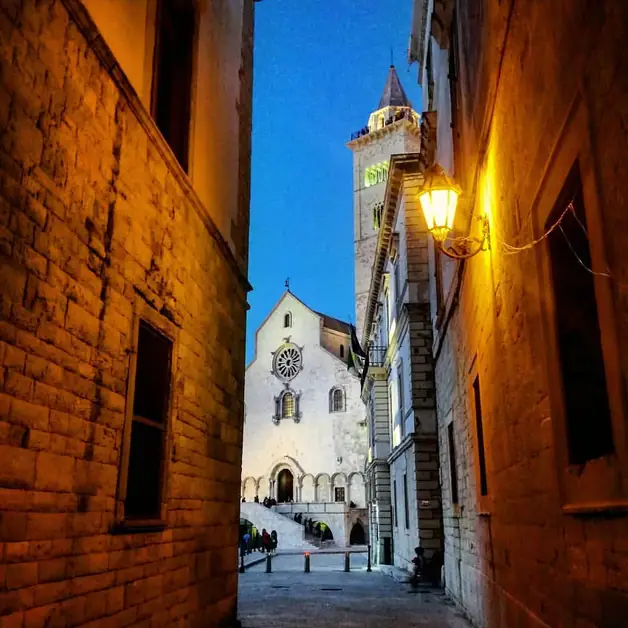Monastery of Santa Maria di Colonna in Trani
Visit the Monastery of Santa Maria di Colonna in Trani, a peaceful place between sea and history.
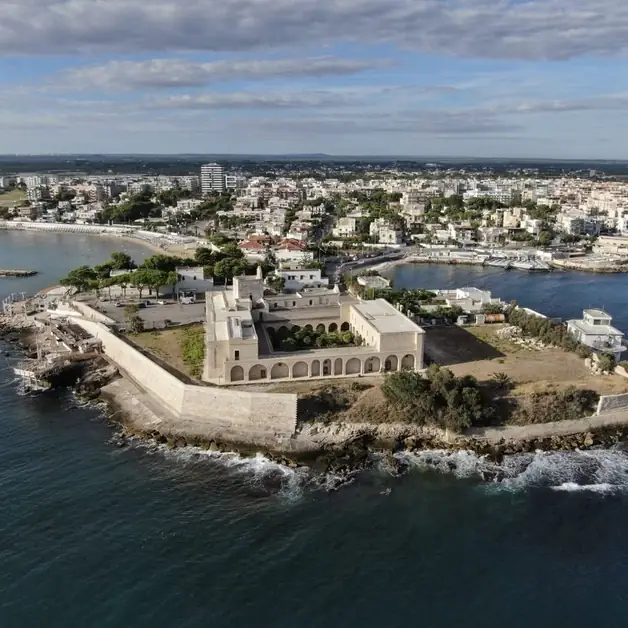
Where is the Monastery of Santa Maria di Colonna in Trani?
The Monastery is located on the promontory of Capo Colonna, about two kilometers from the historic center of Trani. The location is special because the building overlooks the Adriatic, offering views that combine the white of the stone with the deep blue of the sea.
How to get to the Monastery of Santa Maria di Colonna in Trani by car?
Those arriving by car can take the Cristoforo Colombo waterfront, which leads from the port to the tip of Capo Colonna. The road is straightforward, with almost continuous sea views, and the signs are plentiful. However, the real obstacle is parking: the space right in front of the monastery is limited and often already occupied, especially in summer or on weekends.
To avoid long waits, it’s advisable to leave the car along the waterfront, where there are sections with free parking and areas with blue lines. During peak times, it may be useful to park closer to the center and then walk to the complex, thus avoiding traffic and enjoying a stroll by the sea. Alternatively, some visitors choose to leave their car in the parking areas around Piazza Plebiscito and then continue on foot.
Is it possible to reach the Monastery of Santa Maria di Colonna by public transport or on foot?
Yes, and it is a recommended choice if you want to avoid the stress of parking. Urban buses depart from the center that travel along the waterfront and stop a short distance from the monastery. The schedules vary depending on the season, so it’s best to check them before leaving.
Another highly appreciated option is to arrive on foot: from the port of Trani to the monastery takes about 25-30 minutes. The route follows the coast and allows you to observe the sea, small free beaches, and characteristic views of the city. Walking along this stretch also gives the opportunity to discover less touristy corners and breathe in the authentic atmosphere of the waterfront.
What can you see upon entering the Monastery of Santa Maria di Colonna in Trani?
As soon as you cross the threshold, you enter a simple cloister, with light stone and sober shapes. The atmosphere is intimate and conveys a sense of gathering. The attached church preserves Romanesque elements, arches, and capitals that tell the story of Puglia's medieval spirituality. The interior is not richly decorated, but precisely for this reason invites you to stop and observe the details.
What is the connection between the Monastery of Santa Maria di Colonna and the sea of Trani?
The monastery is built on a rocky outcrop that seems to dive into the Adriatic. Exiting to the back, there is a small garden that looks directly towards the water. It is one of the most picturesque spots because it combines the silence of the stone with the movement of the waves. Many visitors stop here to take photographs or simply to breathe in the sea breeze.
What is the history of the Monastery of Santa Maria di Colonna in Trani?
The complex dates back to the 12th century and is linked to the time when Trani was an important port for pilgrims heading to the Holy Land. The position by the sea is not casual: it served as a welcome and prayer point for those undertaking long and dangerous journeys. Over time, the monastery has undergone restorations and transformations, but it still retains its original Romanesque imprint.
What can you find near the Monastery of Santa Maria di Colonna in Trani?
Nearby there are small coves and beaches frequented mainly by locals. A few minutes on foot leads to Colonna beach, with clear water and a shallow seabed. Returning towards the city center, you will find restaurants and venues along the waterfront where you can enjoy fresh fish and Apulian specialties.
When is the best time to visit the Monastery of Santa Maria di Colonna?
The most suggestive moment is late afternoon, when the sun begins to set and the golden light reflects on the light stone of the building. Early morning is also a good time, as the place is quieter and the sea air is still fresh.
